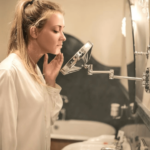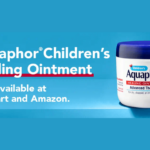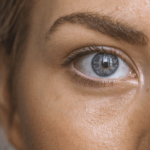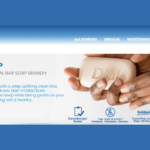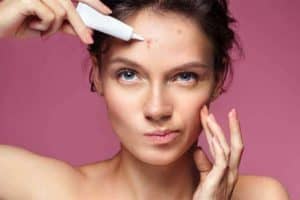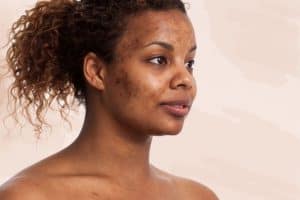Today, we’re going to talk about Retin-A vs benzoyl peroxide vs salicylic acid for body acne.
Benzoyl peroxide produces benzoic acid and oxygen which are helpful warriors against the enemy acne-causing bacteria. Salicylic acid comes from willow tree bark or wintergreen leaves and is a “beta hydroxy acid” with antifungal and antibacterial properties.
Retin-A is also commonly known as vitamin A – it speeds up the skin cell turnover rate; thus, reducing the number of clogged pores.
Many acne-fighting products contain benzoyl peroxide, salicylic acid, and Retin-A. Since we all know that every skin type is unique, each of these ingredients may respond differently to every person.
The only way to know which product and protocol will work best for your skin type is by trial and error.
Read on to learn more about Retin-A vs benzoyl peroxide vs salicylic acid for body acne.
Also, for an excellent and lightweight primer, take a look at our top pick, the M.A.D Skincare Blemish Repelling Gel:
Click here to see it on Amazon.
Retin-A vs Benzoyl Peroxide vs Salicylic Acid for Body Acne
Benzoyl Peroxide
Benzoyl peroxide is not only used as an ingredient to help fight acne but is also used for hair lightening, teeth whitening, and even in food such as baking flour, cereals, and cheese. It belongs to the peroxide family and produces benzoic acid and oxygen, which is not favorable to acne-causing bacteria.
These bacteria thrive in anaerobic conditions where there is an absence of oxygen. Benzoyl peroxide introduces oxygen to the acne-prone area and helps in reducing the amount of oil production. This lessens if not eliminates the fatty acids that the bacteria feed on.
Benzoyl peroxide can cause excessive dryness, flakiness, itchiness as well as rashes, crustiness, and even swelling for people who have sensitive skin. It’s not recommended for people with skin conditions such as eczema, psoriasis, and rosacea. Benzoyl peroxide is best for red papules and red pustules, so if your acne is mostly red and has some pus or kind of cystic, then benzoyl peroxide will work for you.
Just like with a retinoid product, before trying a prescription benzoyl peroxide product, we recommend starting with a good benzoyl product such as the M.A.D Skincare 5% Benzoyl Peroxide Blemish Repelling Gel.
Click here to see it on Amazon.
It has an optimal amount of BPO for most, without the excessive dryness and irritation that comes with a stronger prescription BPO product.
Salicylic Acid
Salicylic acid is derived from the bark of willow trees as well as extracted from wintergreen leaves. It is also known as a “beta hydroxy acid” with antifungal, antibacterial, and keratolytic properties, which break down skin cells and increases the cell turnover rate.
It reduces congestion, whiteheads, and blackheads by breaking down the clogged pores and allowing the oil to come up onto the surface.
People who are allergic to aspirin may be sensitive to salicylic acid, but some can tolerate it if applied topically. For some skin types, salicylic acid may cause redness, itching, flakiness, some stinging, and dryness.
People with acne grades one and two with predominantly more congestion or clogging of the pores respond better to acid products, including glycolic acid, lactic acid, and salicylic acid. They can also be used in combination with benzoyl peroxide.
Salicylic acid increases the skin cell turnover rate and can make your skin photosensitive, so it’s important to use sunscreen with it. It is also advisable to hydrate the skin because if you’re not hydrating your skin, it will produce more oil which the acne-causing bacteria feed on.
To counteract this, use a water-based gel serum for hydration or a lightweight moisturizer. For some, lightweight moisturizers can cause breakouts, so again, the only way to find out is to do a trial and error.
Retin-A
Retin-A is also known as vitamin A or tretinoin. It is stronger than retinol and must be prescribed by a dermatologist. Retinol, on the other hand, is a derivative of vitamin A and is not as strong as Retin-A, so it takes a little bit longer to work.
You can find this in most over-the-counter products in different percentages, so you don’t need a doctor’s prescription to buy it.
Both products may cause redness, peeling, and flakiness, and some people have found that they can actually increase acne breakouts even more. Both Retin-A and retinol speed up the skin cell turnover rate; thus, reducing the number of clogged pores. They can also be used for age spots, fine lines, wrinkles, and areas of hyperpigmentation.
Retin-A and retinol are not suitable for people who have sensitive skin, rosacea, psoriasis, and eczema. They are also not recommended for pregnant and lactating women.
Retinoid products come in a whole array of different names, such as Adapt, Allene, and Renova, as well as Epidural, which is a combination of Adapt, Allene, and benzoyl peroxide. If you have extremely oily skin, you may respond well to Retin-A for your acne treatment.
If you use these products, make sure that you avoid any other additional exfoliating and waxing treatments on your face or wherever you are applying Retin-A.
If you find that your skin is getting red, very sensitive, and swelling, it is best to use a hydrating, calming, and anti-inflammatory product to help you go through that adjustment period.
These are the benefits and some of the disadvantages of using these ingredients to control oily skin and acne. Look for them in products that you can use, start with a small amount, and if you see an improvement, then you can gradually increase the frequency of use.
Before getting a prescription, we recommend starting with a good retinol product first, such as the Amara Beauty 2.5% Retinol Cream. It has both retinol and hyaluronic acid, which prevents dryness.
Click here to see it on Amazon.
It has a good starting amount of retinol, which may be enough without having to get a more potent prescription of Retin-A.
Conclusion – Retin-A vs Benzoyl Peroxide vs Salicylic Acid for Body Acne
In summary, when looking at Retin-A vs benzoyl peroxide vs salicylic acid for body acne, we found that:
- Benzoyl Peroxide belongs to the peroxide family and produces benzoic acid and oxygen, which are helpful warriors against the enemy acne-causing bacteria.
- Salicylic acid comes from willow tree bark or wintergreen leaves and is a “beta hydroxy acid” with antifungal and antibacterial properties.
- Retin-A is also commonly known as vitamin A that speeds up the skin cell turnover rate; thus, reducing the number of clogged pores.
Related Questions
Can you use salicylic acid and benzoyl peroxide together? It is generally safe to use salicylic acid and benzoyl peroxide together. Some products include both ingredients. However, there is a risk that it could make your skin excessively dry, peel, and maybe perhaps cause redness. If this occurs, use the ingredients separately.
What percentage of benzoyl peroxide is best? There is research showing that lower, moderate concentrations of benzoyl peroxide, such as 2.5%, are just as effective as higher concentrations. You can find concentrations up to 10%, but this level of potency can be unnecessary and have greater side effects.
How long does salicylic acid take to work on acne? For many products containing ingredients such as salicylic acid or benzoyl peroxide, you should see improvement in your skin within 1 or 2 weeks. However, the full results can take as long as 2 to 3 months.
Related reading:
How Long Does It Take for Ceramides to Work?
How Long Does It Take for Retinol to Work?
How Long Does Salicylic Acid Take to Absorb?





